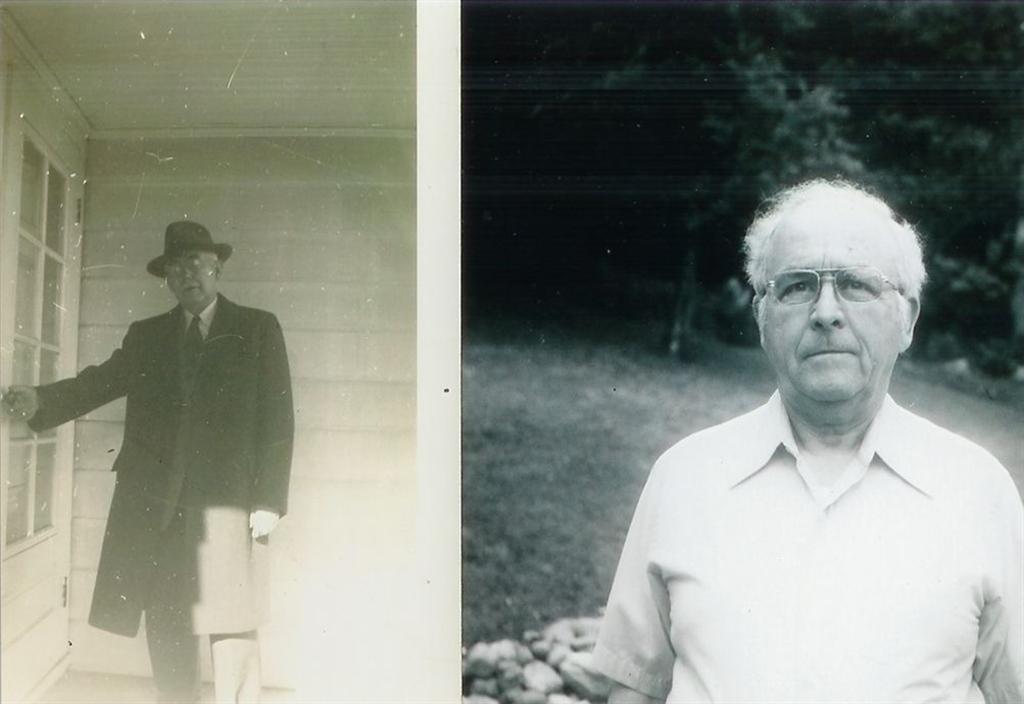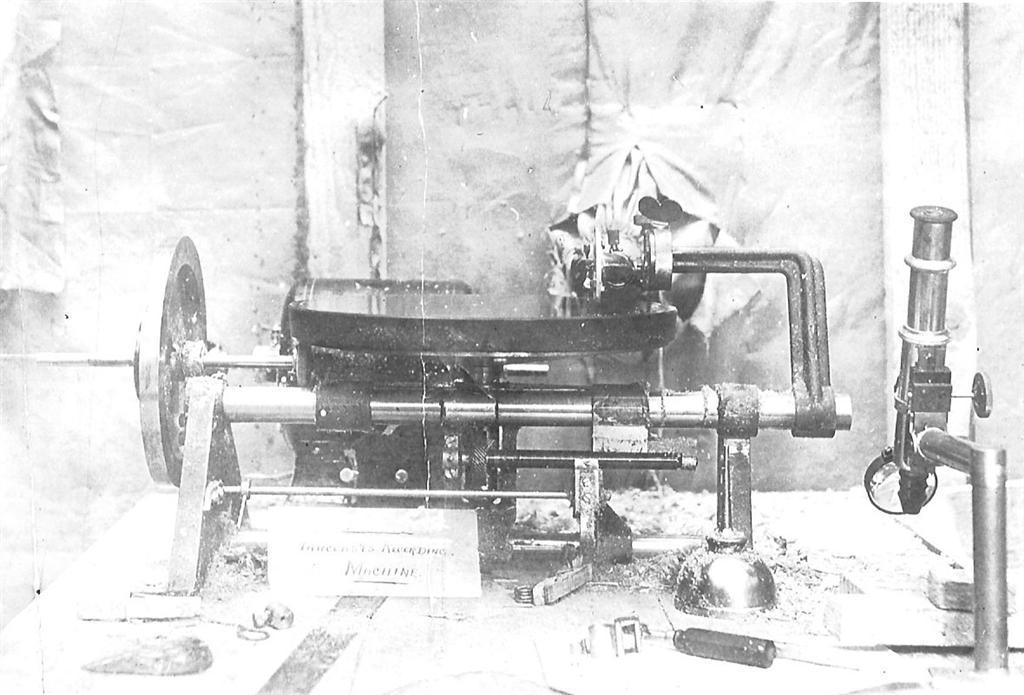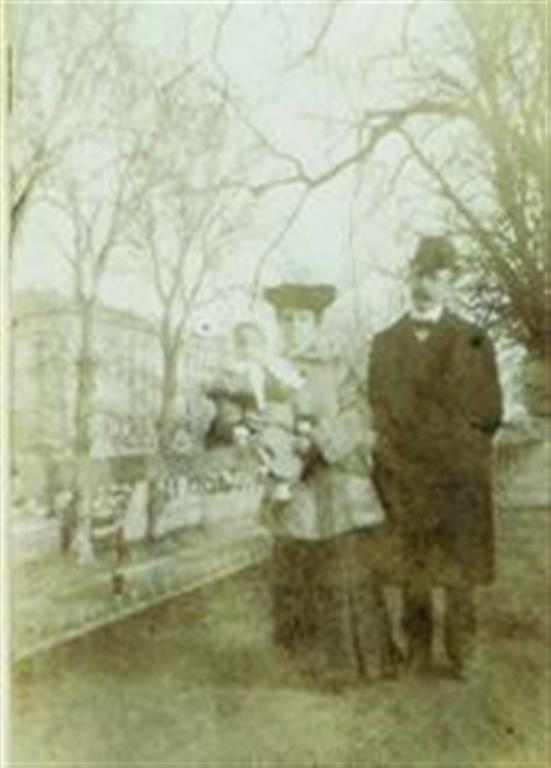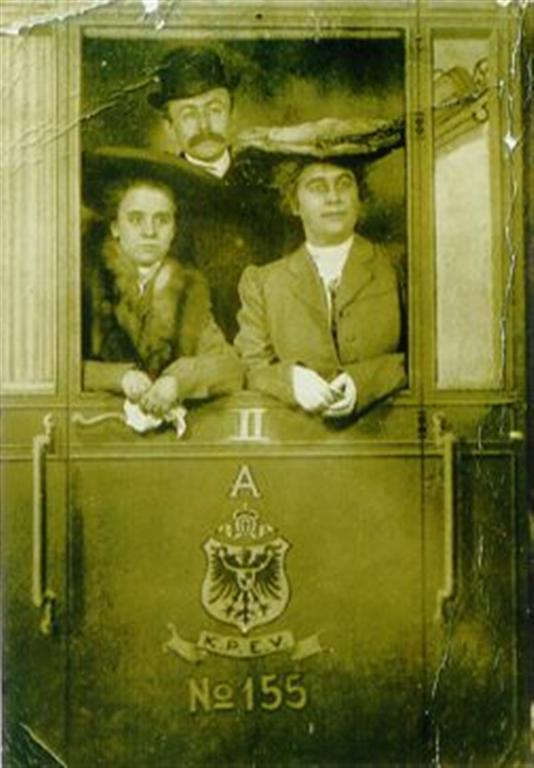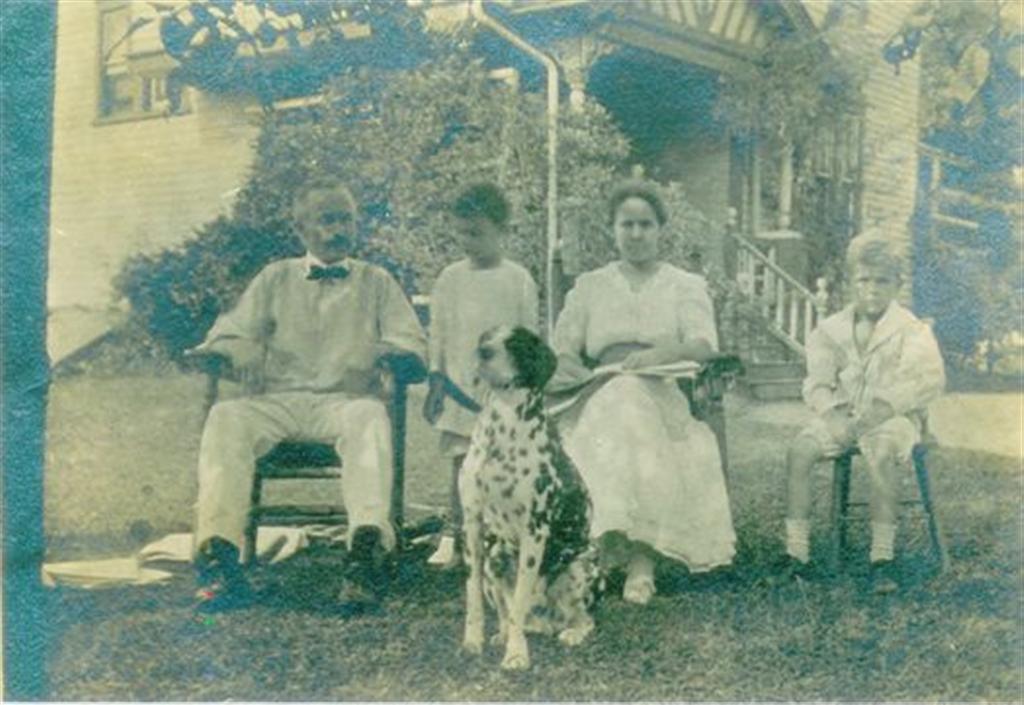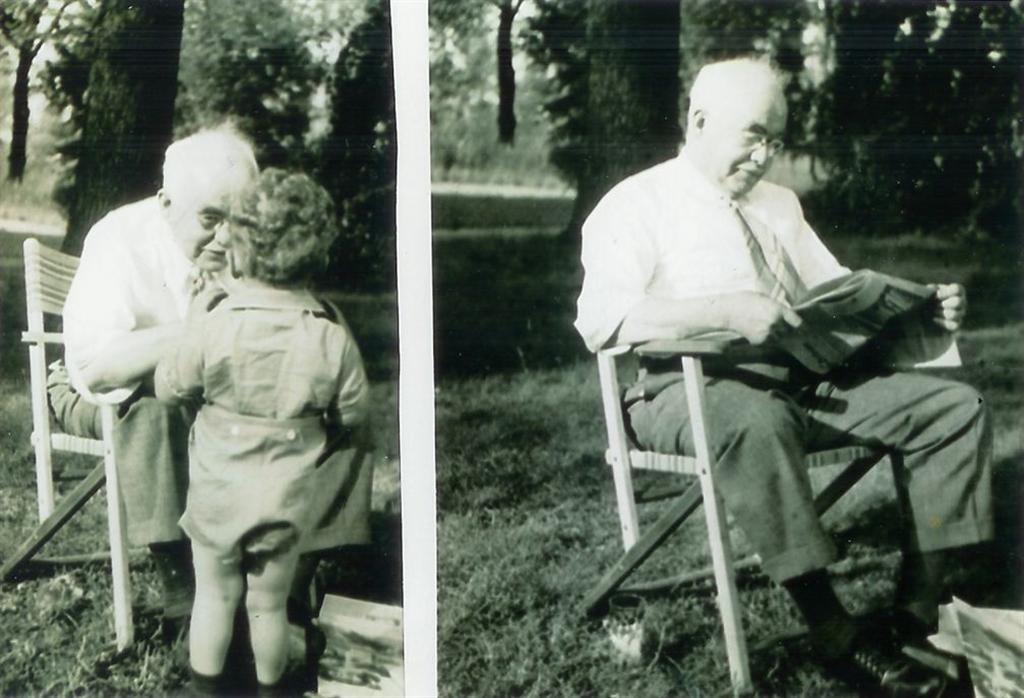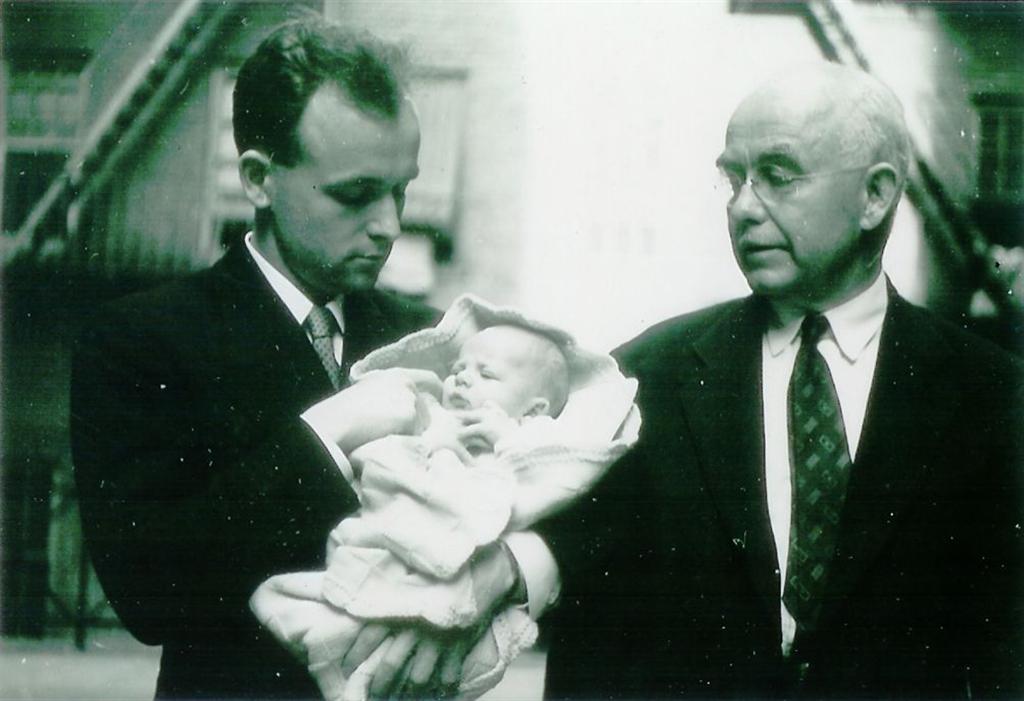PIONEERRESPOND
Edwin Alan PANCOAST ("Ned")1872 - 1944
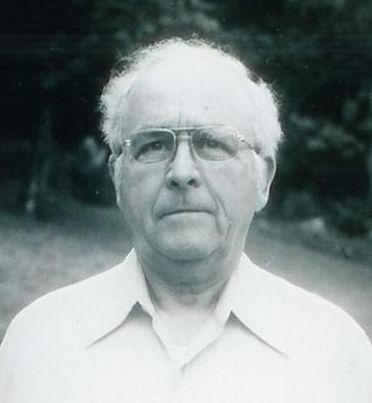 | |
| aka | Edwin A. Pancoast, E. A. Pancoast, Edwin Pancoast, E. Pancoast, Ned Pancoast |
| nationality | |
| occupation | |
| birth | 18 June 1872, Mickleton, Mullica Hill, Gloucester, NJ |
| baptism | |
| death | 29 April 1944, Hawthorne, Passaic, NJ |
| burial | |
| marriage | married on 18 Oct 1899 to:
 Lillian Bertha WHITEHEAD Lillian Bertha WHITEHEAD b. 26(?) Dec 1872, Huntingdon, Huntingdon, PA |
| children |
|
PARENTS
| father | Joseph Haines PANCOAST b. 4 Jan 1840, ....., Gloucester Co., NJ |
| mother | Anna PEASLEE b. 17 Sept (Dec) 1843, Lewis, NY |
| children |
|
LIFE
Left USA on 8 May 1901 (PA1901) and received a passport on 25 May 1901 in Berlin
recorder ZONOPHONE
recorder ITMC (ODEON)
In New York Times of 3 Sept 1903:
WHAT'S DOING IN SOCIETY
"Mr. and Mrs. Edward [= Edwin?] A. Pancoast are booked to sail on the Blücher today for Hamburg."
The date "3 Sept 1903" fits in with Pancoast's arrival from Brazil at New York on 20 Aug 1903.
Edwin Alan Pancoast (1872-1944)
Edwin Alan Pancoast was born on 18 June 1872 in Mickleton, near Mullica Hill, Gloucester, New Jersey as son of Joseph Haines Pancoast and Anna Peaslee.
However, both Edwin's Pancoasts death certificate and obituary give Anne Mosher as his mother.
According to the death certificate the biographical information on Edwin was provided by
his eldest son, George Marshall Pancoast
Until quite recently, Edwin Pancoast was mistakenly known as Edward Pancoast.
The first to correct this mistake were Ernie Bayly and Michael Kinnear in their book "The Zon-o-phone Record" (2001).
Bennett S. Pancoast, author of two books on the Pancoasts in America, writes:
Joseph [Pancoast] farmed a short distance north of Mullica Hill. His five sons all received a good education and did not return to the farm.
Edwin [Pancoast] , known usually as "Ned", left his father's farm for a job in the city. He obtained a job with a new talking machine company in Camden, NJ.
Later, he was sent to Berlin Germany for three years, as their representative.
(Prescotts in America, Vol. 1, p. 239)
Although Bennett Pancoast implies that this "new talking machine company" in Camden, NJ was in fact identical to the International Zonophone Company, it is possible he means Eldridge R. Johnson's Consolidated Talking Machine Company which had been formed in July-Aug 1900 in Camden, New Jersey.
This would tie in with/match/fit Roland Gelatt's remark:
"Each member of this trio [John D. Smoot, Raymond A. Gloetzner and Edwin A. Pancoast] had been employed previously by Berliner or Johnson and was thus initiated in the "secrets" of the wax recording process".
(The Fabulous Phonograph, p. 123)
So chances are Edwin Pancoast, prior to joining Zonophone, worked for Eldridge Johnson.
It is also possible that Bennett Pancoast skipped a stage in Pancoast's career and mixed up Eldridge R. Johnson's "Consolidated Talking Machine Company" with "The International Zonophone Company" of New Jersey.
On 18 October 1899 Edwin Alan Pancoast married Lillian Bertha (or Bertha Lillian) Whitehead from Philadelphia, Pennsylvania.
On 14 August 1900 their son George Marshall Pancoast was born.
On 4 May 1901 Edwin A. Pancoast (mechanical expert), living at Philadelphia, applied to the Department of State at Washington for a passport.
The passport was issued on 9 May 1901 under No. 40785.

In May 1901 Frederick M. Prescott, together with a team of experts (John Daniel Smoot, Raymond Anton Gloetzner and Edwin Alan Pancoast ), sailed for Europe, with the aim of establishing in Berlin a European branch of Zonophone, the International Zonophone Company.
Edwin Pancoast was one of them.
His profession was defined as "machinist" (in fact on his 1901 passport application John D. Smoot was defined as machinist and Pancoast as mechanical expert).
On the UK Incoming Passenger lists we find the team arriving on 16 May 1901 at Liverpool, England, on board the SS 'New England" from Boston:
F. M. Prescott
Mrs. Prescott
Alfred (=Frederick) Prescott (infant)
E. A. Pancoast
Mrs. Pancoast
Mary Pancoast (infant) [should be: George Marshall Pancoast]
John Smoot
Raymond Glotzner
I have serious doubts about the correctness of the UK arrival date (16 May 1901), the ship (SS "NEW ENGLAND") and the port of departure (Boston).
I suspect three different passenger lists of three different UK arrivals (from Boston, Philadelphia and a third port (New York?) were accidentally bundled together and photographed as representing one single voyage:
(1) The Prescott party certainly did not travel on board of the SS "New England".
On the basis of information in the Boston Evening Transcript about departures of ocean steamers from Boston between 2 and 22 May 1901, it is clear that no ship by the name of SS "NEW ENGLAND" left Boston harbor before 22 May 1901. Both the Boston Evening Transcript and the Boston Daily Globe announce the departure of the SS "NEW ENGLAND" from Boston Harbor on 22 May 1901.
(2) Boston seems an unlikely port of departure.
(3) The so-called "Boston passenger list" shows three distinct types of handwriting.
I think we are dealing here with 3 different passenger lists :
- one set of papers for an arrival from Boston (SS "NEW ENGLAND)
- another set (pages 1 and 2 are missing) for an arrival from Philadelphia (ship's name unknown)
- a third passenger list (again ship's name unknown) where the point of embarkation has not been indicated (possibly New York) and of which the first 5 pages are missing.
Apparently these 3 passenger lists were accidentally combined and photographed as one single passenger list: one set of papers for an arrival from Boston (SS "NEW ENGLAND), another set (pages 1 and 2 are missing) for an arrival from Philadelphia (ship?) and a third where the point of embarkation has not been indicated and of which the first 5 pages are missing.
(for this type of document the first page is always crucial since it lists the name of the ship and the port of departure.)
If we examine the handwriting on the third (= Prescott/Pancoast/Smoot/Glotzner) passenger list, there is only one conclusion possible: the reproduced passenger list is incomplete: pages 1-5 are missing (no images) and we have only images of pages 6-16 (images #19 and #25-34). All pages are undated and the point of embarkation has not been indicated on any of the shown pages.
On 25 May 1901 Edwin A. Pancoast applied to the Embassy of the United States at Berlin, Germany, for a passport. It was issued that same day under No. 2575.
That I left the United States on the 8 day of May 1901.
In view of the fact that Pancoast's first passport (No. 40785) was issued on 9 May 1901 we may safely assume that he did not leave the United States before 9 May 1901.
On 14 January 1902 a contract was signed between Henry J. Hagen (International Zonophone Company) and Fred Figner of Rio de Janeiro, Brazil.
In early 1902 (according to Luis Antonio Giron during the second half of January and/or February) Henry J. Hagen, USA-based recording engineer of the International Zonophone Company, made Brazilian recordings in Rio de Janeiro for the Casa Edison (Fred Figner) (Bayly/Kinnear p. 17-18)
He made recordings in two different sizes:
7-inch ZON-O-PHONE RECORD / DISC ZON-O-PHONE
1501-1674 (Brazilian) (1674 has mtx number 10041; p. 81 & 199 Kinnear)
B/K p. 17-18
Afterwards (after 1674?) a new 7-inch series was introduced, starting from 10001 (Rio de Janeiro, 1903).
10-inch DISCO ZON-O-PHONE
x-500-821 (highest known number) (Brazilian)
Perhaps the new 10000 and X-1000 series indicated:
- a separate session on the heels of the first session also by Henry Hagen
- a different shipment of wax blanks, perhaps to replace faulty blanks of the earlier session (spoiled/wasted or of bad quality owing to extreme weather conditions?
7-inch
10001-10054 (Brazilian) Rio de Janeiro
10101-10152 (Brazilian) Rio de Janeiro
10180-10206 (Brazilian) Rio de Janeiro
[1902]
10-inch
x-1001-1023 (Brazilian) Rio de Janeiro
x 1031-1068 (Brazilian, Portuguese) Rio de Janeiro
x-1100-1131 (Spanish) Rio de Janeiro) ROYAL RECORD
x-1150-1167 (Spanish) Rio de Janeiro
[1902]
Argentinian artists recorded in Rio de Janeiro, Brazil ????
x-1107-1108 (Amalia Colon)
x-1109-1110 (A. Perdiguero)
x-1111-1118 (Emilia Cola)
x-1119 (Andres Boga)
x-1120 (Eloisa Ceballos)
x-1120 (Arturo de Navas)
x-1125-1127 (Arnoldo Gomez)
etc.
(B/K, p. 375-376, 377-378)
--------------------------------------------------------------
[footnote or endnote:]
Henry J. Hagen was born on 8 November 1862 in Bloomfield, New Jersey.
In the U.S. Federal Census of 1900 his profession is indicated as manufacturer [of] musical records.
In 1908 Henry J. Hagen lived in Orange, NJ.
He returned from Veracruz on 25 April 1908.
In 1912 he was living in Merchantville, NJ (profession: chemist).
On 24 June 1912 he (chemist) returned with Charles Stanley Althouse (mechanician) from a (recording?) trip in Rio de Janeiro.
Henry Hagen died on 29 September 1912 at Merchantville, New Jersey.
According to Bayly/Kinnear (p. xii) on the 15th of May 1902 the first shipment of 646 ten-inch and 83 seven-inch double-sided discs were shipped from Paris to Fred Figner in Rio de Janeiro: a Brazilian title coupled with a foreign (French or Italian) title.
How are we to interpret these numbers?
Did this shipment consist of 729 different discs (one sample of each Brazilian recording coupled with a French/Italian recording out of a total of ca. 360 successful Brazilian recordings coupled with 360 French/Italian recordings or - say - 10 pressings of each (successful) recording, leaving out the failures?
These discs were probably the first commercially produced examples of double-sided records.
Zonophone records issued in Europe between 1901-1903 were (always) single-sided.
Between February and March/April 1903 Edwin Pancoast had been engaged in recording at Milan (Kinnear).
(Caruso etc.?)
This is confirmed by a picture of Pancoast and his wife. Written on the back: Milan, January 1903.
On 16 May 1903 Edwin Pancoast, together with his wife Bertha and son George Marshall, left Hamburg on board of the SS "Patricia" and headed for America.
On the ELLIS ISLAND passenger lists his profession was listed as "mechanician".
They arrived in New York on 29 May 1903.
Their final destination was Philadelphia where his wife's family lived.

Edw. A. PANCOAST [image 1017]
+ Bertha W. PANCOAST (30y)
+ Geo. M. PANCOAST (2y)
ethnicity: USA citizen
profession: Mechanician
date of departure: 16 May 1903
port of departure: Cuxhaven, Hamburg, Germany
ship's name: SS "PATRICIA"
date of arrival: 29 May 1903
age on arrival: 30y
place of residence: Philadelphia
On the basis of this passenger list we can now correct Bayly/Kinnear's "By late June, Edwin Pancoast was in New York..." to "By late May, Edwin Pancoast was in New York..."
After a short break in Philadelphia Edwin was to travel to Rio de Janeiro, Brazil, to make recordings for Fred Figner of the Casa Edison.
Bayly/Kinnear write:
It would appear that many of the recordings taken by Henry Hagen had been unsuccessful, or technically imperfect, as a year later [when exactly?], Frederick Prescott was writing from Berlin to Fred Figner offering to re-make all the Brazilian recordings. Considering the large number of untraced titles in the Brazilian 1500 (7-inch) and X-500 (10-inch) series, Frederick Prescott's offer to re-make the recordings seems justified.
(p. 18)
When Pancoast sailed to South America is uncertain.
What we do know is that on 1 August 1903 he left Rio de Janeiro on board of the SS "Byron".
This time his profession: "musical engineer".
Via Bahia, Pernambuco and Barbados, Pancoast arrived back in New York on 20 August 1903.
From there Pancoast returned to Europe.
In view of this information we can conclude that he was recording in Rio de Janeiro, Brazil, during July 1903, possibly even as early as late June.
The item on The [Zonophone] Recording Expenses July-December 1903 sheet mentioning Pancoast's salary ("Salair a/Mr. Pancoast vom 27/6. bis 3. October) confirms the afore-mentioned.
Bayly and Kinnear's "during August and September 1903" therefore cannot be correct. (p. 25)
From Luis Antonio Giron:
RX / XR (R = Rio de Janeiro)
The question is: when were the Argentinian recordings made?
Looking at the matrix numbers one would say the Buenos Aires recordings were made after the Brazilian recordings were made.
The numbers of the 10-inch recordings even suggest immediately after the Rio de Janeiro session.
Assuming that the matrix numbers represent a chronological order that would mean
Did Pancoast perhaps go back to to South America again, after his arrival at New York, this time to make recordings in Buenos Aires? From Buenos Aires he then may have returned to Europe, which would explain why he is not found in the ELLIS ISLAND files.
7-inch
10001-10054 (Brazilian) Rio de Janeiro
10101-10152 (Brazilian) Rio de Janeiro
10180-10206 (Brazilian) Rio de Janeiro
[July 1903]
-------------------------------------------------------------
10558-10587 (Swiss) Zürich
[ca. 25-30 April 1903 ?]
-------------------------------------------------------------
10588-10807 (Italian) Milan
[............]
-------------------------------------------------------------
10808-10839 (Austrian) Vienna
10840-10900 (Hungarian) Budapest
10901-11100 (Austrian) Vienna
-------------------------------------------------------------
11103-11128 (Spanish) Buenos Aires
11130-11135 (Spanish) Buenos Aires
11140-11158 (Spanish) Buenos Aires
11200-11220 (Spanish) Buenos Aires
11230-11256 (Spanish) Buenos Aires
11300-11343 (Spanish) Buenos Aires
11351-11360 (Spanish) Buenos Aires
11400-11434 (Spanish) Buenos Aires (ROYAL RECORD)
[188 recordings]
10-inch
x-1001-1023 (Brazilian) Rio de Janeiro
x 1031-1068 (Brazilian, Portuguese) Rio de Janeiro
x-1100-1131 (Spanish) Rio de Janeiro) ROYAL RECORD
x-1150-1167 (Spanish) Rio de Janeiro
[July 1903]
Argentinian artists recorded in Rio de Janeiro, Brazil ????
x-1107-1108 (Amalia Colon)
x-1109-1110 (A. Perdiguero)
x-1111-1118 (Emilia Cola)
x-1119 (Andres Boga)
x-1120 (Eloisa Ceballos)
x-1120 (Arturo de Navas)
x-1125-1127 (Arnoldo Gomez)
etc.
(Bayly/Kinnear, pp. 375-376, 377-378)
--------------------------------------------------------------
x-1200-1212 (Alfredo Munilla) (Spanish) Buenos Aires
x-1220-1230 (Arturo de Navas) (Spanish) Buenos Aires (Zwarg: x 1220-1223)
x-1300-1312 (Banda de Policia de Buenos Aires)
x-1313-1319 (Orquestra del Theatro San Martin, Buenos Aires)
[44 recordings]
Zwarg has x-1300-1314
According to Zwarg recorded in Berlin.
According to Kelly recorded in Paris.
--------------------------------------------------------------
x-1550-1556 (Italian) Milan, 19 April 1903: Caruso
-------------------------------------------------------------
x-1676-1685 (Swiss) Zürich
[ca. 25-30 April 1903, based on Woessner's assumption that:
- these recordings were made by the Milan engineer (evidence?)
- they were made after the Italian Milan recording session (evidence?)
Comparing the handwriting in the wax on Italian records with that on Swiss records might give a clue.
-------------------------------------------------------------
In late 1902 M. E. Repetto y Cia, 679 Calle Cangallo, Buenos Aires, was appointed agent of the International Zonophone Company for Argentina.
These recordings may have been made some time in 1903.
According to Bayly/Kinnear "Performers chosen by the agency recorded a selection of over two hundred recordings in Spanish." (page 22).
These were mainly 7" recordings (at least 188) plus some 44 10" recordings.
These recordings were issued partly as "Royal Record", partly as "Disco Zon-o-phone".
When were the Argentinian recordings made and by whom?
On the Zonophone Recording Expenses July-December 1903 sheet (see page ...) Pancoast is only credited for having made the Brazilian recordings.
Why were the Argentinian recordings not mentioned on the July-Dec recording expenses sheet?
I can think of two reasons:
(1) The Argentinian recordings were made prior to July 1903 and therefore not mentioned on the expenses sheet.
For exactly the same reason Pancoast's Italian Milan recordings are not listed on the July-December sheet, as they were made prior to July 1903.
It cannot be ruled out that Pancoast first visited Buenos Aires (Argentina) and then left Argentina on board of an ship bound for Rio de Janeiro, Brazil.
(the first ELLIS ISLAND sheet has "Buenos Aires" added)
After having completed his recording in Rio de Janeiro Pancoast boarded the SS "BYRON" and sailed back to New York.
But this seems to contradict the fact that the matrix numbers of the Brazilian recordings "pre-date" the Argentinian recordings, i.e. are lower than than those of the Argentinian recordings.
Unless the numbers on the records are not matrix numbers in the strictest sense, but rather indicate the order in which recordings were processed at the factory...
At times the numbering of the records may represent the actual chronological order in which the recordings were made.
However, at times it looks as if the recordings were processed in batches (of different recording sessions). Sometimes individual recordings were used to fill up gaps in the numbering system, perhaps because records turned out a failure and were scrapped.
During the processing of the pressing masters, certain recordings may have been rushed through, if/when - for whatever reason - considered a priority.
(2) The Argentinian recordings were not made by Pancoast, but by one of the USA-based engineers of the American branch of The International Zonophone Company, George K. Cheney, John C. English(?), Henry J. Hagen or Andrew Haug.
Universal Talking Machine Company?
Since we cannot be sure that the consecutive side/matrix numbers represent an exact chronolgy of the recordings, it is difficult to establish when the Argentinian Buenos Aires recordings were made.
It seems as if the numbers sometimes reflect the order in which the different batches were processed at the factory, rather than the order in which they were recorded.
This resembles the practice of putting an extra manufacturing number on each side of Columbia UK records in the late twenties/early thirties, apart from the usual matrix number and coupling number.
Maybe we should call these numbers "pressing master numbers".
Why not give the 10" records the same six-digit production numbers?
According to Zwarg records originally had a (recording?) date in wax and a different number.
Who has Zonophones?
According to the ELLIS ISLAND files Pancoast left Rio de Janeiro on August 1, 1903 on board of the SS "Byron" and arrived in New York on August 20, 1903.
(see page 3 article by Luis Antonio Giron "Um imperio musical no Brasil)
The SS "Byron" had left Santos - the port of Sao Paulo just under Rio de Janeiro - the previous day (image 0656 has "Buenos Aires" scribbled over "Santos", listing a number of passengers from Argentina).
If Pancoast had been in Argentina prior to the Brazil recording session, he must have been on a boat from Buenos Aires to Rio de Janeiro in ca June.

E. PANCOAST
ethnicity: USA citizen
profession: mus. engineer
29 July - from Santos
date of departure: 1 Aug 1903
port of departure: Rio de Janeiro, Federal District, Brazil
4 Aug - from Bahia
6 Aug - from Pernambuco
13 Aug - from Barbados
ship's name: SS "BYRON"
date of arrival: 20 Aug 1903
age on arrival: 31y
last residence: Berlin
final destination: Philadelphia (returning home)

From New York he must have gone back to Germany, but since we have no passenger lists for return voyages from America to Germany we do not know when Pancoast left the United States.
Letter of 23 April 1904 from Hermann Schwabe (International Zonophone Company, Filiale Berlin) to Th. B. Birnbaum (The Gramophone & Typewriter Ltd. London) + annex "Recording Expenses July/December 1903" (mentioning Hans Gloetzner, Mr. Smoot and Ed. Pancoast):
Enclosed I hand you ....... and, by order of Messrs Cooper & Cooper: a detailed analysis of the amount charged to Recording Account during the 6 months ending 31st December amounting to M. 6337,87.
[Zonophone] Recording Expenses July-December 1903
Juli 1. für an Ant. Sattler gegebene Waren 15.-
,, 18. Spesen des Hans Glötzner für in Jassy
gemachte rumänische Aufnahmen 988.90
,, 18. Zahlung a/O. Grünberg, Jassy, für Aufnahme-
spesen 101.65
Aug. 12. für im Mai an Mr. Smoot gemachte Zahlung
von Nicole Frères, London 24.17
Sept. 23. für von Grünberg bezahlte rumänische
Aufnahmen 1179.55
,, 30. Spesen des Ed. Pancoast für brasilianische
Aufnahmen in Rio de Janeiro 546.66
,, 30. Salair a/Mr. Pancoast vom 27/6. bis 3. Oct. 3234.-
Oct. 1. für in Amsterdam verauslagte Fracht- & Zoll-
spesen a/Wachsplatten laut Angabe von Mr.
Moorhouse 133.27
Dec. 8. für von H. & J. Blumenthal Frères im Juni
verauslagte Spesen in Constantinopel 85.-
,, 19. für im Juni an Ant. Sattler gegebene Waren 93.-
______
M 6401.20
Hiervon geht ab:
Oct. 1. von Blieck, Amsterdam, erhaltener Betrag
laut Angabe von Mr. Moorhouse 63.33
______
M 6337.87
On 25 June 1904 Edwin Pancoast sailed for the USA with wife and eldest son George Marshall.
They were accompanied by Bertha's older sister Alice S. Whitehead, who had apparently come over to Europe to visit her sister.

E. A. PANCOAST (listed under: E. A. PENCOAST with "E")
+ Mrs. E. A. PANCOAST (n.a.)
+ George [M.] PANCOAST (n.a.)
+ Miss Alice S. WHITEHEAD (n.a.) = Bertha's sister
ethnicity: USA citizen
profession:
date of departure: 25 June 1904
port of departure: Cuxhaven, Hamburg, Germany
ship's name: SS "PRETORIA"
date of arrival: 8 July 1904
age on arrival: no age given
place of residence: Philadelphia
On 14 March 1905 Pancoast's second son Edwin Alan Pancoast Jr. was born in Upper Montclair, Essex, New Jersey.
By mid-1906 The Gramophone Company was looking for an extra recording engineer.
Due to the rapidly expanding/increasing Zonophone sales the workload in Berlin was becoming too heavy.
This had everything to do with the decision of The Gramophone Company to issue double-sided Zonophone records.
(letter 12/7/1906, 12/9/1906:
The rapid increase of the Zono business is making more work than we can properly attend to...
Letter 28/9/1906:
I mentioned casually that our Company was short of recording experts owing to the ever increasing volume of business...
FOOTNOTE / ENDNOTE
The situation had become all the more urgent because of William Sinkler Darby's ill health (letters 30/4/1906 (Birnbaum to Calvin Child), 28/9/1906, p. 3; 25/10/1906).
Since April 1906 Darby had been seriously ill with lung trouble [pleurisy], no doubt the result of the gruelling recording trip to Russia. Upon his return he was sent for a four week's cure to Badenweiler, a town in southern Germany near the Swiss border, to convalesce/recover.
In a letter of 1 June 1906 N. M. Rodkinson (DGAG - Berlin) writes to Theo B. Birnbaum (London):
Darby. A specialist who examined him here.
In that same letter Rodkinson refers to the need for a new recording expert and suggests a number of likely candidates:
New Expert. I am very much inclined to agree to the view expressed by Gaisberg and would suggest one of the ODEON men. The best man the ODEON has, is young Glötzner [= Hans Gloetzner] who I understand is at present in South-America. Their man Pancoast has also done some fine recording.
I think it would be very difficult to get one of the Glötzners, but Pancoast might be approached in London. The entire staff of the ODEON is American with the exception of Goldstein, who is not worth considering.
[for more info on ODEON experts see LINDSTRöM-folder]
In the end it seems Goldstein was the only recording expert willing to change sides and join the ranks of The Gramophone Company. See the separate chapter on Goldstein.
By 1 June 1906 Edwin Pancoast may have been in London as is suggested in N. M. Rodkinson's letter of 1 June 1906 to Theo. B. Birnbaum (London):
..., but Pancoast might be approached in London.
However it is doubtful that this statement is correct, since Pancoast's name is not found among the ELLIS ISLAND arrivals after 1904.
Why Pancoast might be approached in London in 1906 is not clear.
Both the ELLIS ISLAND files and Bennett Pancoast's book The Pancoast Family in America suggest that Pancoast left the International Talking Machine Company in 1904, and returned to America for good.
The last time Pancoast's name occurs on the passenger lists of the ELLIS ISLAND files is when he returns to America in July 1904.
And on page 239 of The Pancoast Family in America Vol. 1 we read:
"Later, he was sent to Berlin Germany for three years, as their representative.
In a few years, Ned resigned his job and went into business for himself."
Perhaps Rodkinson had Pancoast confused with Dan Smoot, who was based in London until mid-1906.
On 31 October 1906 their third son, John Philip Pancoast was born.
Edwin Alan Pancoast's residences:
1872-.... - Mickleton/Mullica Hill, Gloucester, NJ
1900 - Merchantville (Pennsauken) Camden, NJ
1901-mid-1904 - Europe (Philadelphia given as residence in the USA)
1905-1906 - Upper Montclair, Essex, NJ
1930 CENSUS - Tenafly, Bergen, NJ
1941-1944 - Hawthorne, Passaic, NJ
According to Bennett Pancoast, Edwin's wife, Lillian Bertha Whitehead, died on 15 September 1930.
This cannot be true, since, according to the Federal Census of 7 April 1930, Edwin Alan Pancoast was living as a widower with his three sons in Tenafly, Bergen, New Jersey.
So, Bertha must have died prior to 7 April 1930...
I recently learned from the granddaughter of Pancoast that Bertha died on 15 Sep 1929. Problem solved.
In the 1930 Census Edwin's profession is described as "mechanical?/musical? engineer in the soundpicture industry".
At one time Edwin had his own recording studio.
His son, Edwin A. Pancoast Jr., worked in his father's studio, before becoming a radio broadcaster.
At the time of his death Edwin Pancoast was working in the Engineering Department of the Wright Aero Corporation, Plant No. 1.
Edwin Alan Pancoast died on 29 April 1944 in Hawthorne, Passaic, New Jersey, where he had been living since 1941.
He was cremated on May 2, 1944 at N. Y. New Jersey Crematory.
NOTES
- See p. 6 of part I of Harry O. Sooy's Memoir of my Career at the Victor Talking Machine Company (The David Sarnoff Library) internet
- New York Times of 3 Sept 1903: WHAT'S DOING IN SOCIETY
COMPANIES & LABELS
INTERNATIONAL TALKING MACHINE COMPANY
INTERNATIONAL ZONOPHONE COMPANY
ODEON
ODEON (USA)
PHOTOS
THANK YOU
EMI Music Archives
Teresa Steen
Ruth Edge
Jaine Pancoast Vaughn




